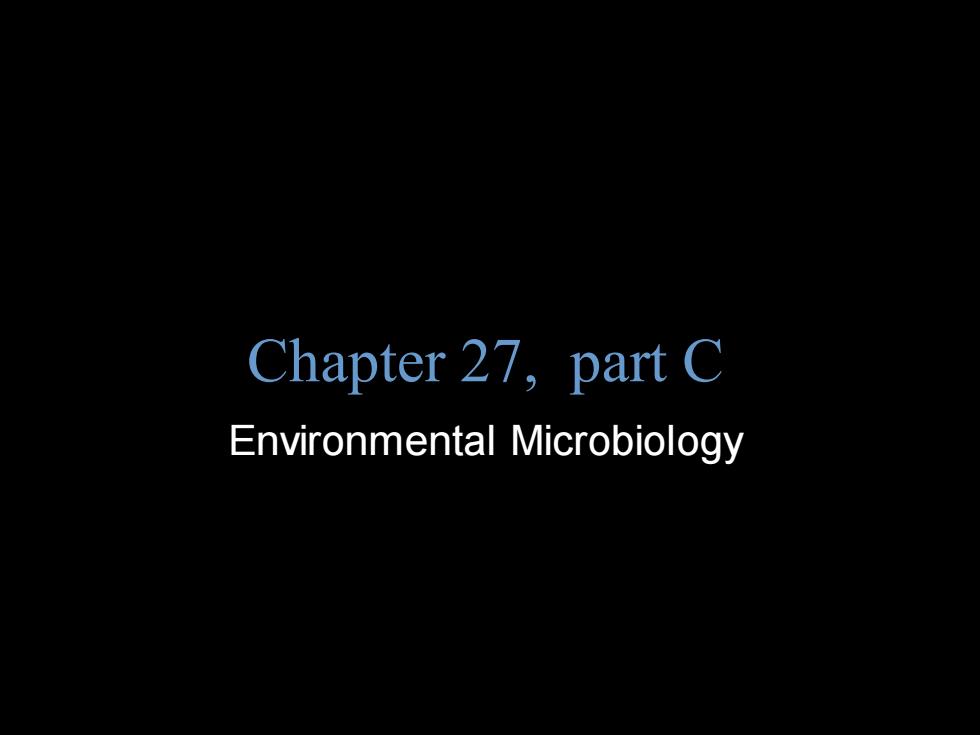
Chapter 27,part C Environmental Microbiology
Copyright © 2004 Pearson Education, Inc., publishing as Benjamin Cummings B.E Pruitt & Jane J. Stein Chapter 27, part C Environmental Microbiology
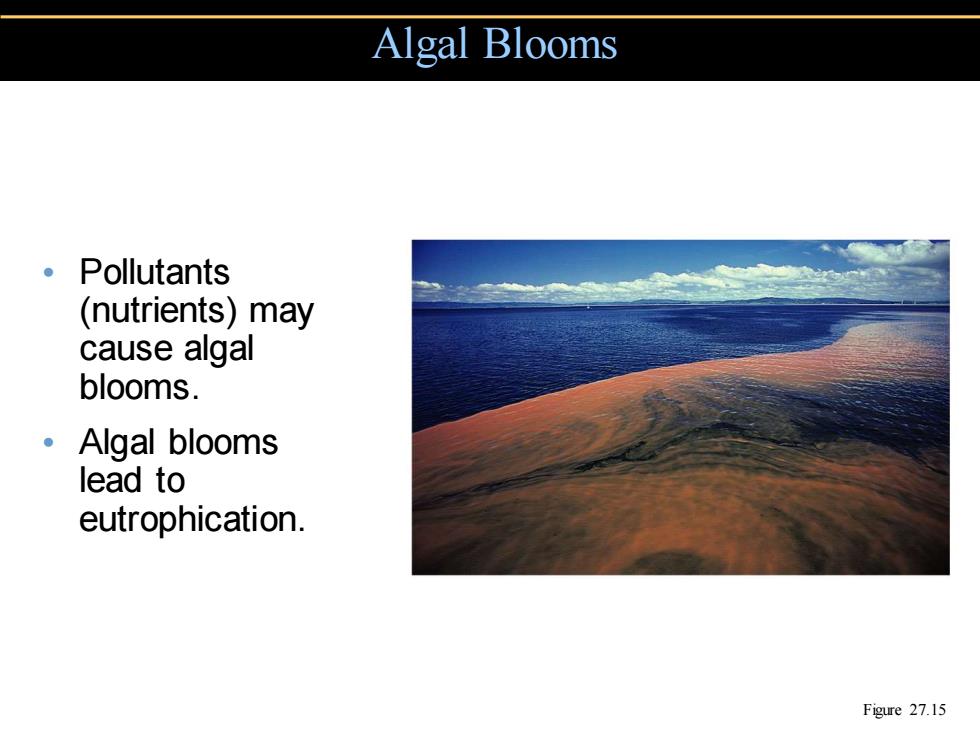
Algal Blooms ● Pollutants (nutrients)may cause algal blooms. 。Algal blooms lead to eutrophication. Figure 27.15
• Pollutants (nutrients) may cause algal blooms. • Algal blooms lead to eutrophication. Algal Blooms Figure 27.15
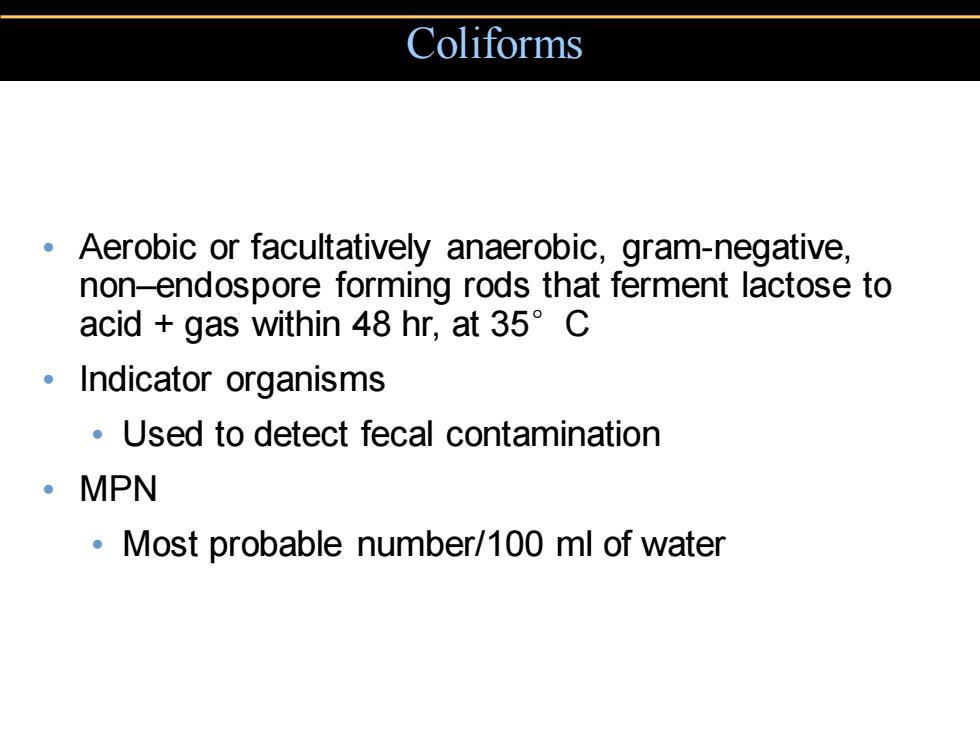
Coliforms Aerobic or facultatively anaerobic,gram-negative, non-endospore forming rods that ferment lactose to acid gas within 48 hr,at 35 C 。Indicator organisms Used to detect fecal contamination 。MPN Most probable number/100 ml of water
• Aerobic or facultatively anaerobic, gram-negative, non–endospore forming rods that ferment lactose to acid + gas within 48 hr, at 35°C • Indicator organisms • Used to detect fecal contamination • MPN • Most probable number/100 ml of water Coliforms
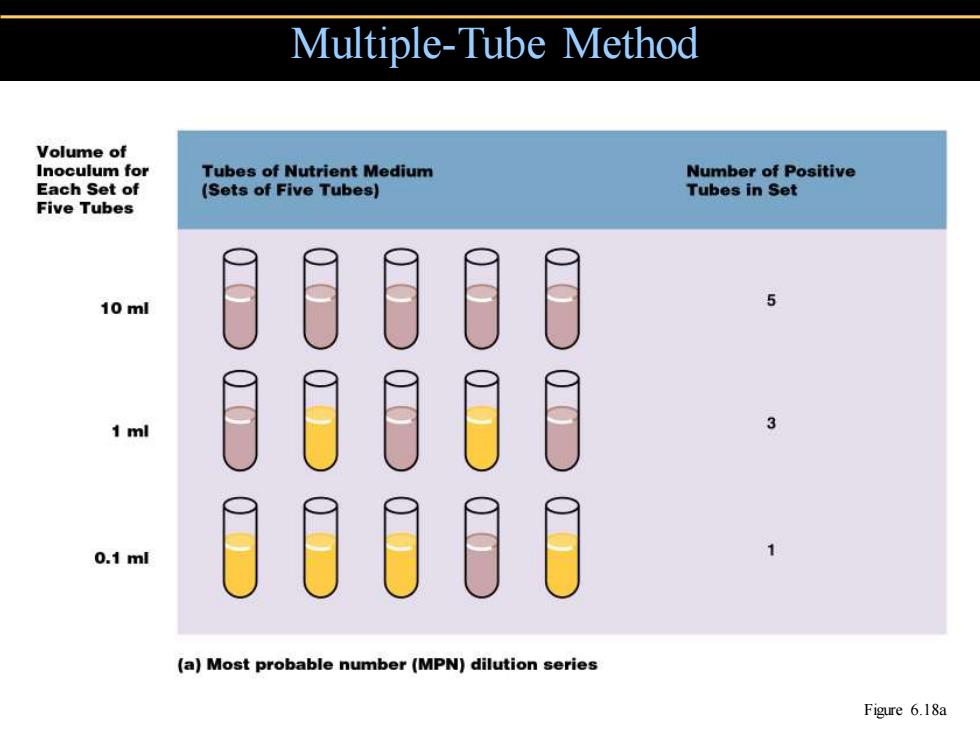
Multiple-Tube Method Volume of Inoculum for Tubes of Nutrient Medium Number of Positive Each Set of (Sets of Five Tubes) Tubes in Set Five Tubes 10ml 1ml 目日日0目 3 0.1ml 6日i0司 (a)Most probable number(MPN)dilution series Figure 6.18a
Multiple-Tube Method Figure 6.18a
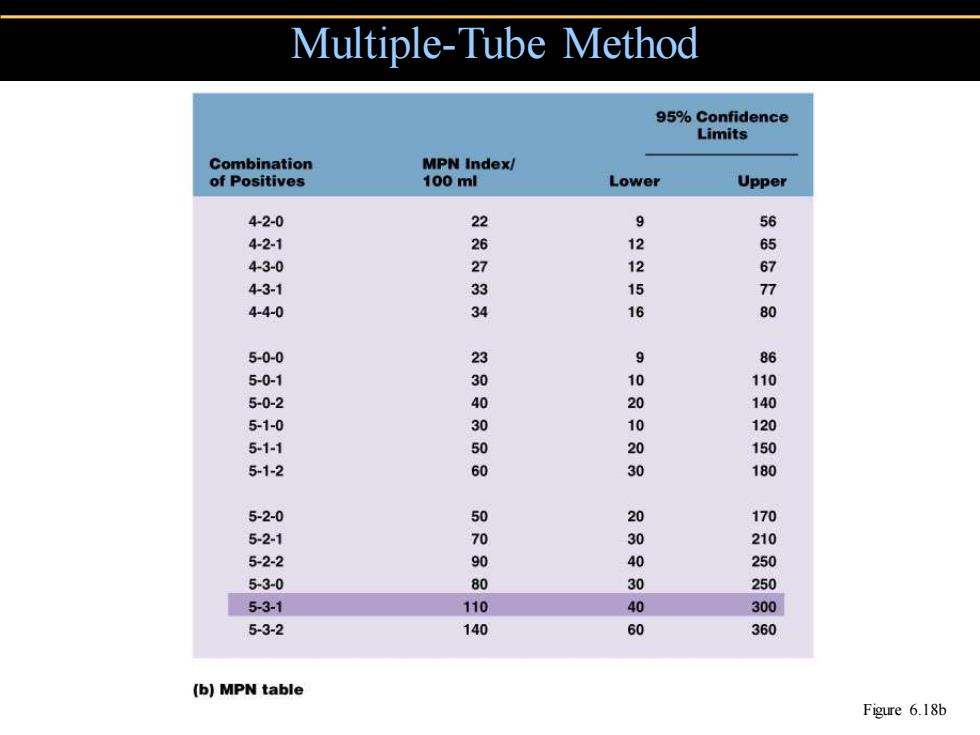
Multiple-Tube Method 95%Confidence Limits Combination MPN Index/ of Positives 100 ml Lower Upper 42-0 22 9 56 4-2-1 262 12 65 43-0 12 6 4-3-1 33 1 1 4-4-0 34 16 80 5-0-0 23 9 86 5-0-1 10 110 5-0-2 40 20 140 5-1-0 10 120 5-1-1 50 20 150 5-1-2 30 180 5-2-0 50 20 170 5-2-1 30 210 5-2-2 9 40 250 5-3-0 80 30 250 5-3-1 110 40 300 5-3-2 140 60 360 (b)MPN table Figure 6.18b
Multiple-Tube Method Figure 6.18b